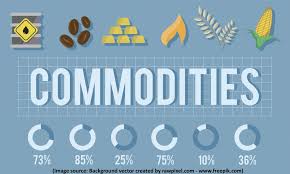Many experienced investors use a variety of assets to hedge and diversify their portfolios away from risks. Among such assets are commodities. Read on and find out how you can add commodities to your portfolio.
Commodities
Commodities refer to products that are more or less uniform in quality and utility regardless of where they came from. For example, when shoppers buy a bag of, say, wheat flour at the supermarket, they don’t really read where the wheat has been milled.
Commodities are also interchangeable, meaning the consumers don’t generally care about the brand. Investors usually adopt a more specific view, tending to refer to a specific group of basic goods that are in demand across the globe. Investors usually focus on raw materials for manufactured finished goods.
For investors, there are generally two categories of commodities: hard and soft. Hard commodities require mining or drilling to find. These include gold and aluminum. On the other hand, soft commodities are those that are grown or ranched. These include corn and cattle.
Benchmark for Commodity Investing
It is crucially important to benchmark your portfolio performance because it enables you to measure your risk-tolerance and return expectations. More importantly, benchmarking offers a basis for comparison of your portfolio performance with the rest of the market.
In the case of commodities, you can look at S&P GSCI Total Return Index, which is considered a broad commodity index and an ideal benchmark. This benchmark holds all futures contracts for commodities such as oil, wheat, corn, and gold.
Adding Value
Commodities typically have a low to negative correlation to traditional asset classes such as stocks and bonds. A correlation coefficient refers to a number between -1 and 1 that gauges the degree to which two variables are linearly related.
In other words, a positive correlation coefficient of 1 means that when one asset goes up, the other also goes up. If the correlation coefficient is -1, then when the one asset goes up, the other goes down. If the figure is 0, then the two assets have no linear relationship.
Volatility
Supply and demand are the two main drivers of commodity volatility. And because supply and demand characteristics change often, volatility in commodities is usually higher than for stocks, bonds, and other types of assets.
Some commodities have higher stability than others, like gold, which is also the reserve asset for central banks to buffer against volatility. However, even the precious metal becomes volatile sometimes. And other commodities usually swing between stable and volatile conditions based on market dynamics.
Way to Invest in Commodities
Investors have 4 general ways to invest in commodities.
- Investing directly
- Using commodity futures
- Buying ETF shares from ETFs that focus on commodities
- Buying stocks of companies that produce or are related to commodities
Investing directly involves buying and storing the commodity itself. Selling a commodity means finding a buyer and managing the delivery.
Commodity futures contracts provide direct exposure to changes in commodity prices and there are ETFs that also offer some exposure to commodities. But if you think you’re better off in the stock market, then you can choose to trade stocks in companies that produce the commodity.








+ There are no comments
Add yours